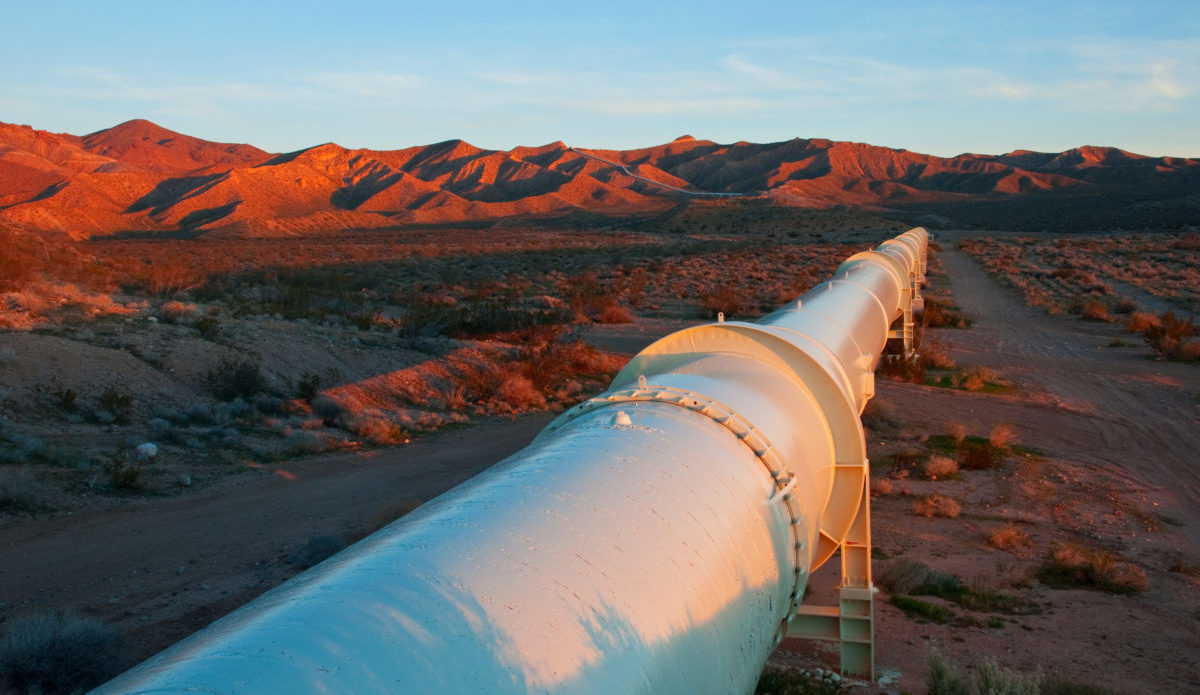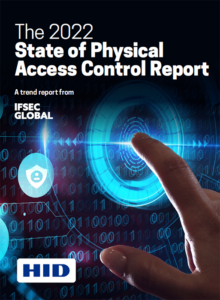Critical national infrastructure (CNI) assets are the veins that pump power around the nation and need protection at all costs against theft and sabotage.
In some dangerous or remote areas this can be a particularly thorny challenge for security teams, as monitoring equipment will often only alert them to a breach during or after an attack – when it’s too late.
To mitigate threats against CNI, security teams must be notified as soon as an unknown person approaches a remote asset – before an attack takes place. With this in mind situational awareness is key, allowing organisations to respond in an effective manner without the burden of false alarms (for example if an animal crosses a desert pipeline).
CNI of course comes in many different forms and protection must vary depending on the nature of the infrastructure and the threat it faces. For example, one would protect a member of the police and an oil pipeline using different technologies and processes.
This article will focus on protecting remote CNI such as oil and gas pipelines, water reserves and the like against physical attacks.
Remote assets are problematic because many technologies can only be deployed in accessible locations with a source of power, communications and road or rail infrastructure. Intelligent technology that produces a kind of ‘digital wall’ can alert security teams to an attack before it takes place, giving them a better chance of responding effectively, while reducing false alarms.
The value of critical national infrastructure
Providing water, warmth and light, the resources produced by CNI sites are priceless as they are essential to a normal quality of life. However, these resources are also associated with a very high material cost.
For example, Thames Water supplies parts of the UK with 2.6 billion litres of drinking water per day, generating a revenue of over £2bn a year. Oil prices, meanwhile, recently hit highs of $80 a barrel and 19.88 million barrels are consumed on average per day in the US.
Nations require vast lengths of pipeline to transport critical resources to various, disparate locations. For example, the US alone has 240,711 miles of oil pipelines and 1,984,321 miles of gas pipelines, many parts of which are very remote. The same goes for the many pipelines criss-crossing the desert in the Middle East and Africa, and the rainforests in South America.
Response teams tasked with protecting these assets are often hundreds of miles away at any given moment
But response teams tasked with protecting these assets are often hundreds of miles away at any given moment. It’s even likely that smart criminals will specifically target the most remote parts, knowing this reduces their likelihood of getting caught.
Furthermore, oil and gas consumption continues to rise, driving exploration, extraction and processing activities into increasingly hostile and remote regions. However, identifying and recovering valuable oil and gas reserves means nothing without the security of supply.
The physical threat
The Centre for the Protection of National Infrastructure (CPNI) argues that national infrastructure is subject to the same threats as the country as a whole, namely “…terrorism, espionage, cyber threats and the proliferation of weapons of mass destruction…” And with oil prices so high the threat of theft is, accordingly, high too.
Regardless, theft of resources is always a massive concern for critical service providers and nation states, with oil for example fuelling terrorist groups and drug cartels. Mexican drug gangs can earn more than £70,000 in a few minutes by looting a refined oil pipeline, and Nigeria continuously loses a third of its refined oil exports to theft from insurgents.
In today’s politically sensitive age espionage is a major threat too. In the case of industrial espionage, intelligence services may be deployed against their enemies to identify industrial secrets or sensitive IP, which could put threaten to take resources down.
While secrets are increasingly stolen via cyber-attack, physical security remains a key part of protecting critical assets against espionage.
Trespassers use a variety of methods to access infrastructure, from simple tunnelling to using drones for reconnaissance.
Malicious actors are often a constantly moving target that is incredibly hard to pinpoint, particularly if they’re employing tools such as drones. And they will target an asset’s weakest points – those that are the furthest away from response teams.
The fact of the matter is, regardless of the method used, any trespassers on oil, gas and even water pipelines are a constant worry for security teams who know that it is their duty to have the best measures in place to protect the lifeblood of the countries that their pipelines are supplying.
A matter of life and death
One might argue that much of the current approach to security in remote locations is inadequate. The challenging realities of varying terrain, long distances and limited power and communications infrastructures render many conventional security measures, such as fencing and camera networks, incredibly impractical.
Periodic monitoring by helicopters or land vehicles run the risk of becoming predictable and easy to circumvent, as well as costly. These overt high-touch approaches must be replaced with more intelligent, cost-effective and autonomous systems.
Several good technologies are currently in use, typically based around fibre-optic cable solutions, for monitoring long-lengths of pipeline against theft methods such as digging and hot-tapping (making a connection to a pipeline without interrupting its operation). Fibre-optic cable solutions are fit for this purpose because pipelines travelling for more than 40km can be monitored with a single cable. The solution also has the additional benefit that the cable can be used for communications.
Fibre-optic cable solutions tend to be costly and take a long time to install
However, these solutions require access to a reliable power source. They also tend to be costly and take a long time to install.
And while they have proven reliable for monitoring purposes, they have significant security limitations.
Fundamentally, they can’t prevent a security breach. They alert security personnel where a breach is occurring, but often alerts will come too late.
Responding to the security breach might take considerable time, even with helicopter or UAV intervention. However, significant damage to the pipeline is likely to have occurred by the time teams arrive, and the consequential environmental damage is likely to run into millions of dollars to rectify.
As discussed before, the key to a good security solution for such assets is the earliest possible detection of intruders along routes most likely to be used to access pipelines. Early detection provides time for security personnel to respond and intercept intruders and prevent damage.
In extremely remote areas where personnel are unlikely to have time to react promptly, non-lethal deterrents such as acoustic alarms have also proved successful in keeping intruders away from vital infrastructure until a response team can arrive.
The ‘digital wall’ solution
So how can the earliest possible intrusion detection and optimal situational awareness be achieved? Erecting a ‘digital wall’ that is nigh on impossible for intruders to detect or circumnavigate.
New capabilities of this nature have developed out of war zones in Afghanistan, with remote security in mind. Due to their high-pressure heritage, these solutions were created for quick deployment, to run for long periods of time on their own power source and – most importantly – to work independently of national communications infrastructure. These are now available commercially and are in-service today, protecting remote critical national infrastructure assets and borders in Africa, Asia and the Middle East.
These intrusion detection systems feature autonomous and wireless ground sensor networks that detect seismic activity, such as vehicle or human activity, and automatically alert security personnel via a self-forming, self-healing network. ‘Self-healing’ means that if one node is put out of action, the network has the intelligence to adapt accordingly.
The sensors’ unique low profile design and minimal spoil (no digging-in required) makes them lightweight and quick to deploy with a long service life. They’ve also been specially designed to filter out false alarms.
This network can then be supported by a series of video cameras that are awakened when a potential intrusion is detected, relaying a controllable, real-time HD video stream from the remote location to security operators. This real-time streaming works regardless of what communications infrastructure is put in place at the location, even sometimes when power resources are scarce.
Developed for war zone deployment, this video capability can stream from anywhere, to anywhere, regardless of infrastructure. It does this by using encoding and transmission technology for video, audio, alarms and other data, enabling footage transmission over whatever communications network is available, at an incredibly low bandwidth.
Facial recognition technology could add an extra layer of security, further improving situational awareness. When the live video stream is triggered by the detection of seismic activity by ground sensors, this could prompt facial recognition software to also run on video surveillance cameras. This could be used to identify if a person nearing an asset is simply a routine maintenance worker or a trespasser who has been identified stealing oil from pipelines on previous occasions.
Comprehensively protecting CNI assets located within remote and sometimes hostile environments can seem like an impossible task. However, with the right solutions in place – namely, by building a hard-to-detect digital wall – it’s possible to put effective protections in place.
Proactively monitoring access routes means you can respond before rather than when an attack is initiated, significantly improving response times. This is a critical part of protecting entire nations in countless ways: from ensuring the continuity of everyday life to preventing vast financial losses and thwarting gang activity fuelled by theft of natural resources like oil.
Keep up with the access control market
The physical access control market is moving fast. Find out where you stand with the latest edition of IFSEC Insider's comprehensive 2022 State of Physical Access Control trend report, covering all the latest developments within the market. We assess the current technology in use, upgrade plans and challenges, and major trends on the horizon after receiving the views of over 1000 security, facilities and IT professionals.
Get your copy for free today.



Quite illuminating.
Thanks for sharing.
Sounds like good potential. How do we get more details?